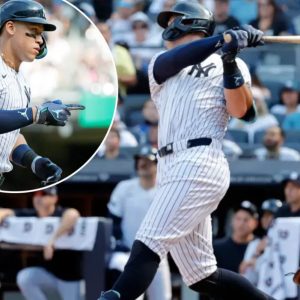Among the 13 position players on the Red Sox’ roster, it’s likely that Dominic Smith is the team’s slowest baserunner.

But teams don’t get to choose who’s on the bases in a big moment. So when Kansas City Royals starter Seth Lugo skipped a pitch past batterymate Salvador Perez in the top of the sixth inning Tuesday night, guess who happened to be occupying third base for the Red Sox?
Smith is far from fleet. Compounding matters was that he was initially indecisive about breaking for home as the ball got past Perez and reached the backstop.
“The ball kind of kicked up,” recounted Smith, “so when it kicked up, I felt it was pretty close to home plate and I thought it might have hit off the umpire and stayed in the vicinity of home plate. It was kind of close for me, with my speed, to run if the ball’s in that dirt circle.”
The combination of a slow baserunner and the late start probably should have doomed Smith, who eventually, upon hearing third base coach Kyle Hudson and teammates urging him to break for the plate, did so.
“Way too late,” conceded Smith. “If you’re not taking off until they’re saying ‘Go!’ nine times out of 10, you’re going to be out.”
And for a while, he was. Home plate umpire Malachi Moore ruled Smith out on a close play. But in the Red Sox’ replay room, replay coordinator Mike Brenly was certain the Red Sox should challenge.
“I wasn’t too sure when he tagged me,” said Smith after the Red Sox had held off the Royals, 6-5. “But when I saw (the dugout) go for the challenge, I knew there was a good chance it would be overturned. We’ve been pretty good with challenges all year. We don’t challenge stuff unless it’s definitive, so I was pretty happy when I saw them challenge it — especially after getting a bad jump like that.
With Lugo racing to cover the plate and take the throw from Perez, Smith figured there was an opening.
“I know pitchers don’t have that much time doing defensive work and (practicing) tag plays,” explained Smith, “so I was just trying to hesitate and just make a move — try to touch (the plate) before he touched me, in any way I could. I’ve been seeing a lot of our speedy guys doing it all year, so I decided to (steal) from their playbook.”
After Moore’s call, Smith lay in the dirt, downcast, without much of any objection. But he said that reflected another emotion, rather than confirmation that the call on the field was correct.
“I felt like I got it, I was pretty confident, but I was more upset at my read,” he said, “and that’s why I was so upset. It probably didn’t look like I thought I was safe, but I was thinking about, ‘Damn, that was a terrible read.’ It shouldn’t have even been a close play; the ball went all the way to the wall. That was my perspective. But when I saw them making the challenge, I figured it was probably a 90 percent chance (of it being overturned).
In 19 challenges this year, the Red Sox have had 12 calls overturned, with three confirmed and four stood.
“Even seeing (the replay) on the video board, it was still close. It was one of those things where it could have gone either way. I’ve seen closer plays not get overturned. It was one of those instances where they saw that I got in there and we were able to get away with one.”
He described his slide and attempt at avoiding Lugo’s tag as “just instinct. My slide is a little slower than other people, so I might have a little bit more time to make a move.”
Asked whether his swim move qualified as a breaststroke or butterfly, Smith deadpanned: “Freestyle.”





